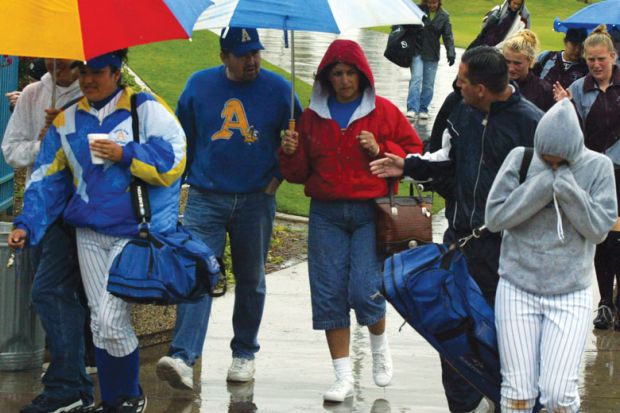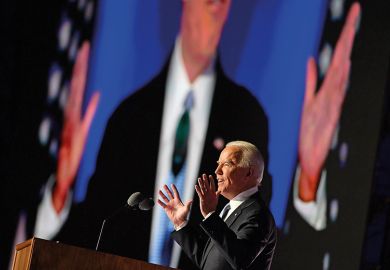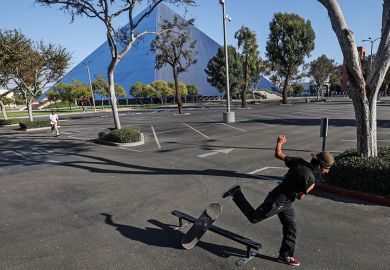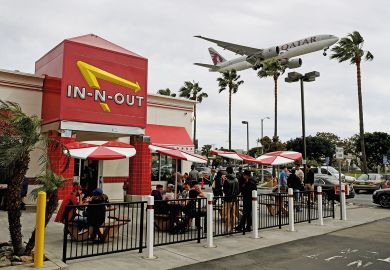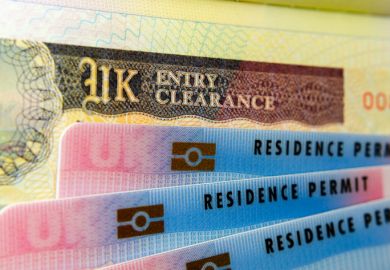The US states that faced the biggest declines in international student recruitment during the Trump administration overwhelmingly voted Republican in the 2016 election, a Times Higher Education analysis has revealed.
The analysis, which drew on the Institute of International Education’s Open Doors database, found that among the 10 states with the highest number of international students, eight faced a decline between 2017-18 and 2019-20. Six of those, including the five with the biggest drops, were states that voted Republican in 2016, and four flipped from Democratic to Republican in that election. Of the remaining four Democratic states, two faced relatively small declines in the number of international students and two saw increases.
Texas was hit with the biggest decline, 8.6 per cent, during the three-year period, followed by Michigan (−7.8 per cent), Indiana (−6.2 per cent), Ohio (−5.5 per cent) and Pennsylvania (−3.4 per cent).
The two Democratic states that faced declines were Illinois (−2.6 per cent) and California (−0.8 per cent), while New York and Massachusetts both saw an increase, of 4.7 per cent and 8.1 per cent, respectively.
When the analysis was expanded to include the 20 states with the highest number of international students, seven out of the eight largest drops were in Republican states. Three of those Republican states since switched to blue in the 2020 election.
Samuel Abrams, professor of politics at Sarah Lawrence College, who is conducting an empirical study aimed at understanding the political culture on university campuses, said the main reason for the trend was that liberal areas tend to be more cosmopolitan and are therefore more attractive to international students.
He added that overseas students tended to choose either “big hub areas that have big cities that are global in nature”, such as Los Angeles, Boston and New York, or institutions like the University of Texas at Austin, which are “liberal bubbles in conservative areas”.
“International students are not necessarily picking [destinations] because of politics; they subconsciously do it because it correlates with these conditions,” he said.
Amy Binder, professor of sociology at the University of California, San Diego, whose research interests include education and politics, said the findings were also likely to relate to the location of elite campuses. California and the east coast are both home to several prestigious institutions, “so withdrawing from them comes at a considerable cost to students”, she said.
However, she continued, postgraduate students might be “more sensitive to states’ political conditions”.
“They may want to work in the country where they did their programme after they graduate, and if a state (or the US as a whole) is inhospitable, they may choose another country,” she said.
Professor Binder added that “at the individual level, I would not be surprised if international students and their families may know something about blue states and red states and make some kind of back-of-the-napkin assessment about whether Nebraska, for example (a red state) would provide a welcoming place to be a foreign student”.
However, she questioned whether individuals would have more detailed knowledge, such as the fact that the University of Nebraska is situated in liberal Lincoln and therefore an outlier in the state.
Register to continue
Why register?
- Registration is free and only takes a moment
- Once registered, you can read 3 articles a month
- Sign up for our newsletter
Subscribe
Or subscribe for unlimited access to:
- Unlimited access to news, views, insights & reviews
- Digital editions
- Digital access to THE’s university and college rankings analysis
Already registered or a current subscriber? Login
